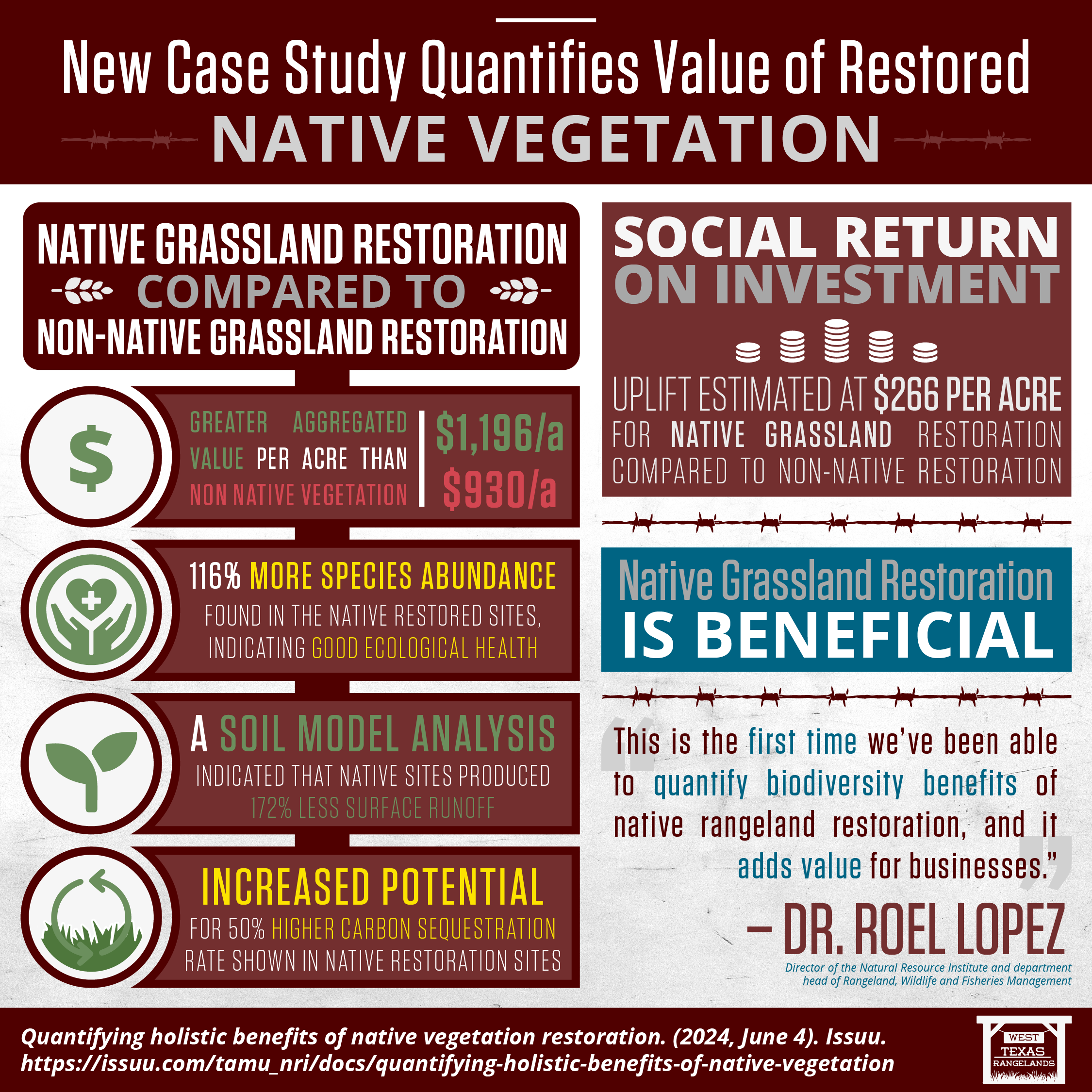 Did you know that there are more than 500,000 miles of oil and gas rights-of-ways in Texas alone? There has been limited information available to evaluate the difference in restoring disturbed lands to native states versus the more traditional use of non-native seeds. Being able to understand the difference along with the ecosystem impacts and the social benefits could create a positive case for vegetation restoration by the oil and gas industry.
Did you know that there are more than 500,000 miles of oil and gas rights-of-ways in Texas alone? There has been limited information available to evaluate the difference in restoring disturbed lands to native states versus the more traditional use of non-native seeds. Being able to understand the difference along with the ecosystem impacts and the social benefits could create a positive case for vegetation restoration by the oil and gas industry.
The two year project with Texas by Nature, Texas A&M Natural Resources Institute, Texas A&M University Department of Rangeland, Wildlife, and Fisheries Management, and EcoMetrics, LLC aimed to quantify and monetize carbon sequestration, water quality, water quantity and biodiversity benefits of native rangeland vegetation within the Eagle Ford Shale play. It also looked to evaluate the return on investment along with the social return on investment for native vegetation restoration. Last but not least, this study aimed to recognize industry partners that are advocates for native vegetation restoration.
The study consisted of four study sites; a native restored grassland, a non-native restored grassland, a native restored well pad, and a non-native restored well pad. These were all located in La Salle County. Soil health, biodiversity, and carbon sequestration were all monitored and measured. The field measures were then paired with literature values to quantify the social return on investment.
Some key takeaways from the study include:
- Native grassland restoration on oil and gas rights-of-ways is economically beneficial
- Native grassland restoration creates greater biodiversity
- Native vegetation increases water recharge and reduces runoff
- Native grassland restoration shows increased potential for carbon sequestration
- Evaluating full scope of benefits supports the case for native restoration
- The findings revealed that overwhelmingly, the native grasses create a greater aggregated value per acre ($1,224/acre) than non-native grasses ($930/acre) (Table 1).
Take a look at Table 1 and view the annual per acre for Native vs. Non-Native grasses.
See these takeaways and more information in the full study here!
For the full economic analysis, view the report here!
